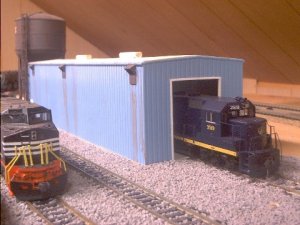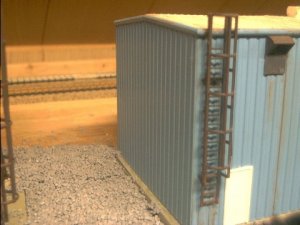hi. im a newbie to this hobby and to this forum. but so far everyones been really helpful and freindly, thanks! i inherited a lot of HO and Lionel trains & acceessories from my dad which, like Citizen Kane searching for his sled, I found in storage and became obsessed with getting them up and running again.
im an architect so model-building is 2nd nature to me and i have resolved to build from scatch many buildings, just for fun/challenge. that said, i purchased a walther HO set to jump start things on the HO end. Its a freight engine type train -CSX - with contemprary engine (i.e. not a steam one) and a freight / boxcar / coal etc set of cars.
And thats when it struck me - i know where passenger trains stop -- a "train station" if you will, but i dont really know where those big freight engines stop. Given I have a freight engine, it would seem logical to build SOMETHING that a freight engine might stop at, like to let the engineer check-in or do a pit stop - but what do these things look like? What would be a logical "first building" for me to build to run this CSX frieght train - and if anyone has any prototype photos showing such a train stopped at a building, id appreciate it!!!
Thanks, kb
im an architect so model-building is 2nd nature to me and i have resolved to build from scatch many buildings, just for fun/challenge. that said, i purchased a walther HO set to jump start things on the HO end. Its a freight engine type train -CSX - with contemprary engine (i.e. not a steam one) and a freight / boxcar / coal etc set of cars.
And thats when it struck me - i know where passenger trains stop -- a "train station" if you will, but i dont really know where those big freight engines stop. Given I have a freight engine, it would seem logical to build SOMETHING that a freight engine might stop at, like to let the engineer check-in or do a pit stop - but what do these things look like? What would be a logical "first building" for me to build to run this CSX frieght train - and if anyone has any prototype photos showing such a train stopped at a building, id appreciate it!!!
Thanks, kb





